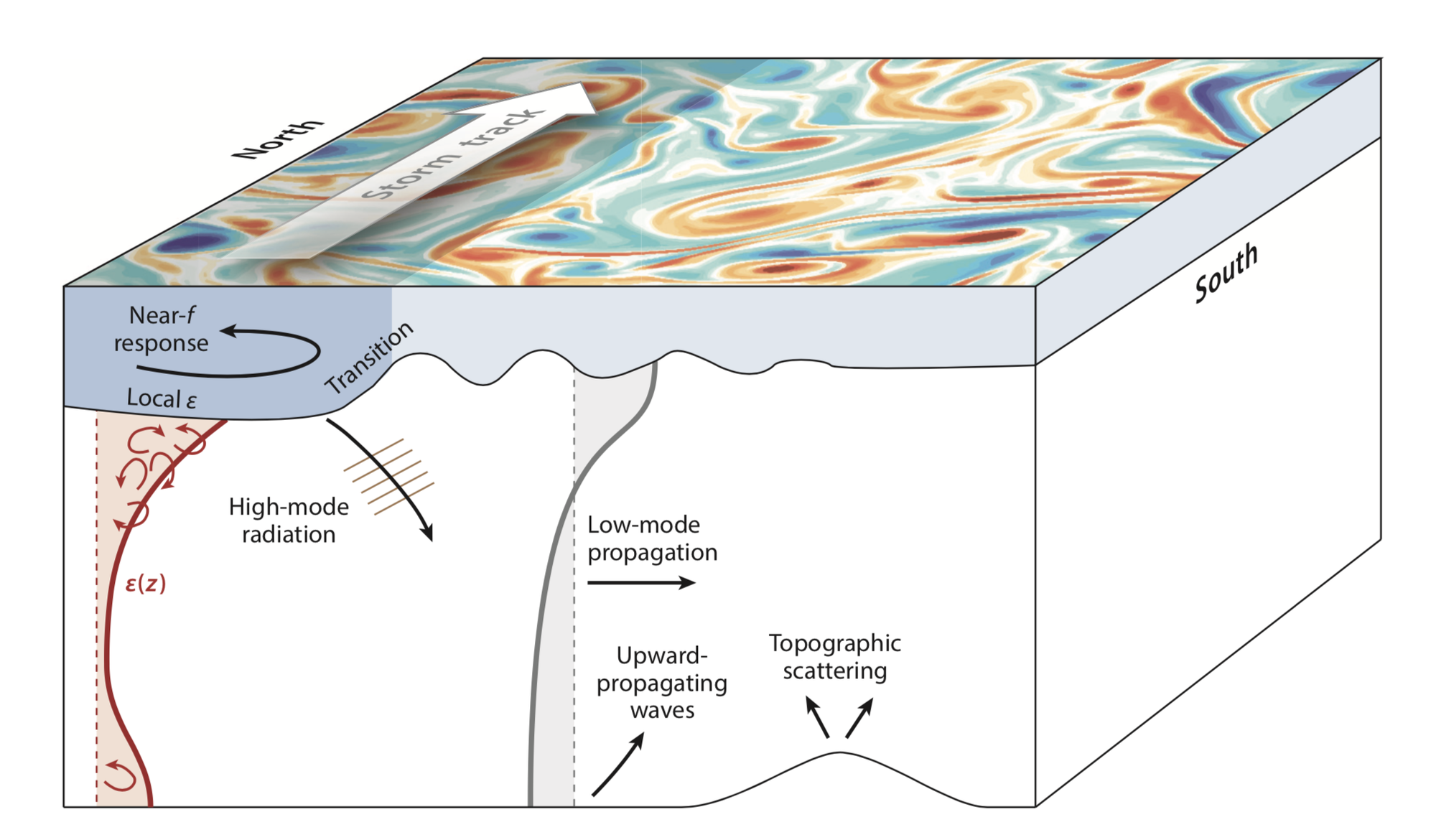Near-Inertial Shear and Kinetic Energy in the North Atlantic Experiment - NISKINe
Variable winds at the ocean surface can force motions inside the ocean that oscillate at frequencies set by the local component of the earth’s rotation rate. Motions at these near-inertial frequencies, so called near-inertial waves, dominate upper ocean shear and contribute to upper ocean turbulence. Their generation, evolution and decay still remain poorly understood. Recent advances in theory and numerical modeling have pointed to interactions of near-inertial waves with mesoscale and submescoscale features.

The Office of Naval Research-sponsored Near Inertial Shear and Kinetic Energy in the North Atlantic experiment (NISKINe) aims at investigating generation, evolution and dissipation of near-inertial waves based on a variety of ship-based and autonomous observations, numerical models and theory. Field work is planned for the Iceland Basin in the North Atlantic, an area of intermittent strong storms, an active mesoscale field in the ocean and a region of strong surface currents, potentially feeding submesoscale dynamics.
Together with my Scripps colleagues Amy Waterhouse and Matthew Alford, and our collaborators Jim Moum from Oregon State University and Harper Simmons from University of Alaska, I am contributing a moored observational component to the project. In May 2019 we deployed an array of three moorings, outfitted with ADCPs, McLane Moored Profilers, thermistors & microcats and turbulence-measuring chipods, in the center of the Iceland Basin. The moorings will provide time series of shear and stratification during times of the field experiment, when a lot of autonomous instruments will be deployed around the moorings, and during the spring and fall storm seasons, when the forcing of near-inertial waves is expected to be strongest.
